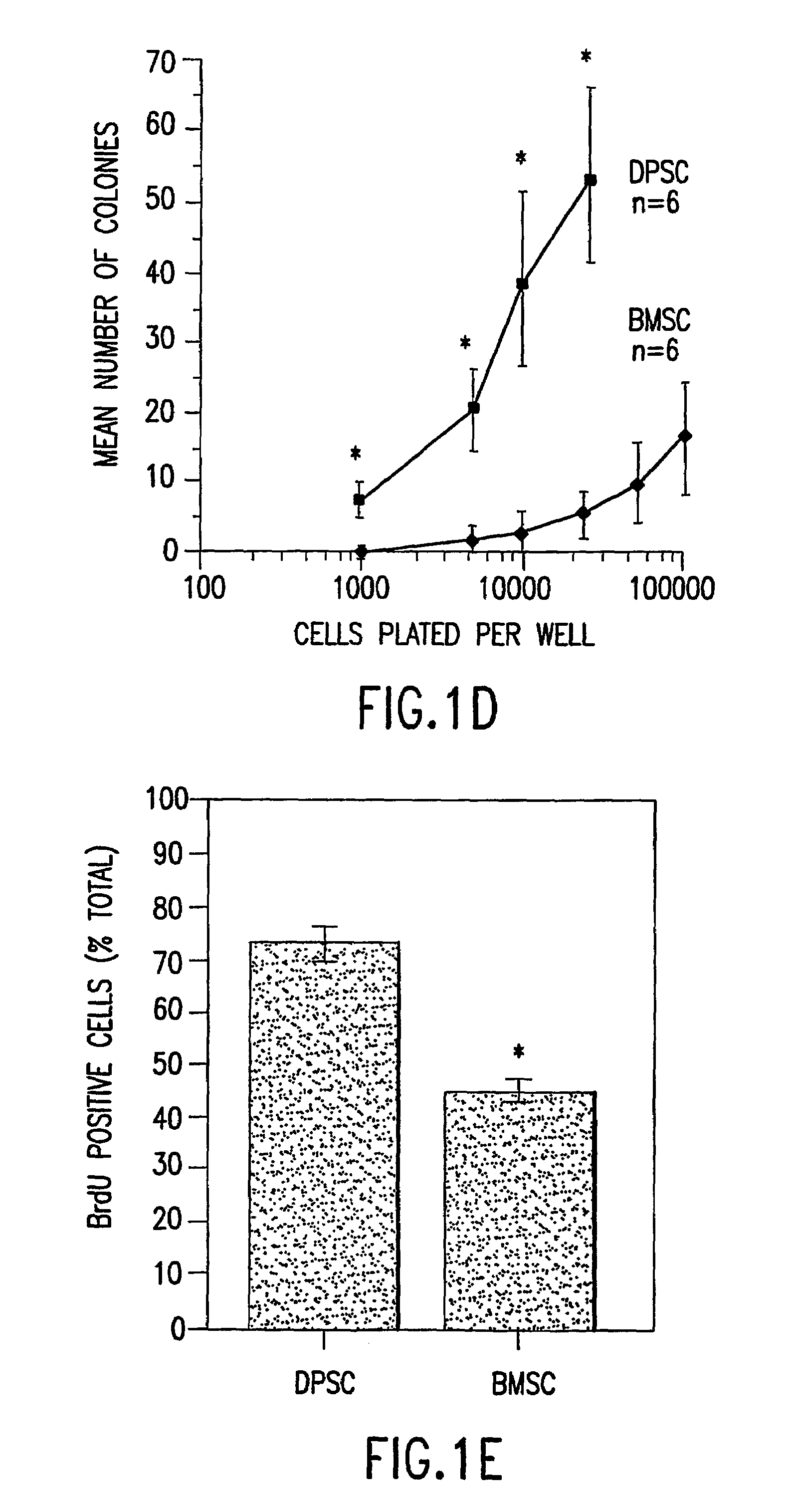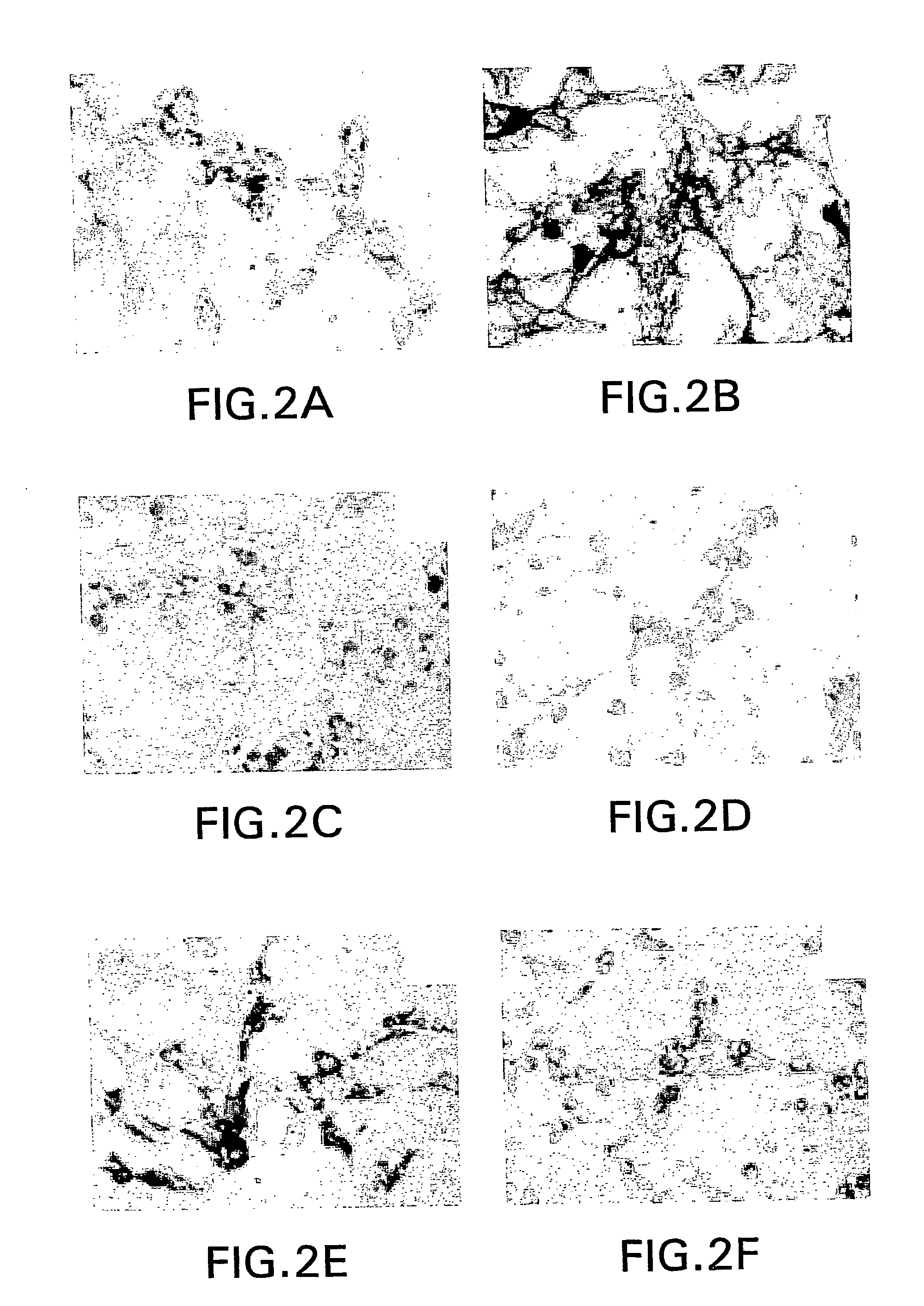Adult human dental pulp stem cells in vitro and in vivo
a technology of adult human dental pulp and stem cells, which is applied in the field of human restoration dentistry, can solve the problems of identification and isolation of odontogenic progenitor populations from adult dental pulp tissue, and achieve the effect of improving the quality of life and reducing the risk of infection
- Summary
- Abstract
- Description
- Claims
- Application Information
AI Technical Summary
Problems solved by technology
Method used
Image
Examples
examples
Subjects and Cell Culture.
[0028]Normal human impacted third molars were collected from adults (19–29 years of age) at the Dental Clinic of the National Institute of Dental & Craniofacial Research under approved guidelines set by the NIH Office of Human Subjects Research. Tooth surfaces were cleaned and cut around the cementum-enamel junction using sterilized dental fissure burs to reveal the pulp chamber. The pulp tissue was gently separated from the crown and root and then digested in a solution of 3 mg / ml collagenase type I (Worthington Biochem, Freehold, N.J.) and 4 mg / ml dispase (Boehringer Mannheim, GMBH, Germany) for one hour at 37° C. Single cell suspensions were obtained by passing the cells through a 70 μm strainer (Falcon, BD Labware, Franklin Lakes, N.J.). Bone marrow cells, processed from marrow aspirates of normal human adult volunteers (20–35 years of age), were purchased from Poietic Technologies, Gaithersburg, Md., and then washed in growth medium. Single cell suspen...
PUM
| Property | Measurement | Unit |
|---|---|---|
| pH | aaaaa | aaaaa |
| pH | aaaaa | aaaaa |
| structure | aaaaa | aaaaa |
Abstract
Description
Claims
Application Information
 Login to View More
Login to View More - R&D
- Intellectual Property
- Life Sciences
- Materials
- Tech Scout
- Unparalleled Data Quality
- Higher Quality Content
- 60% Fewer Hallucinations
Browse by: Latest US Patents, China's latest patents, Technical Efficacy Thesaurus, Application Domain, Technology Topic, Popular Technical Reports.
© 2025 PatSnap. All rights reserved.Legal|Privacy policy|Modern Slavery Act Transparency Statement|Sitemap|About US| Contact US: help@patsnap.com



